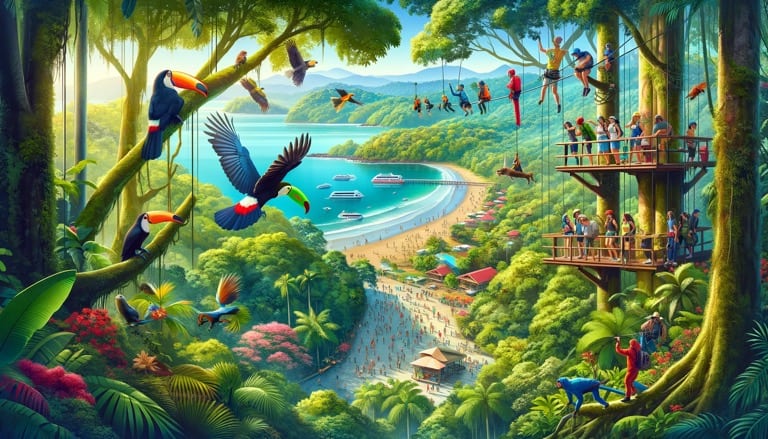As we approach the peak of the tourist season, Costa Rica’s National System of Conservation Areas (SINAC) has released detailed guidelines to ensure that both national and international visitors can enjoy and protect the country’s natural wonders responsibly.
The emphasis on responsible tourism in these protected areas is crucial for safeguarding visitor safety and health. This initiative not only improves the quality of tours but also fosters an environment conducive to biodiversity observation, recreational activities, and environmental education.
Franz Tattenbach, the Minister of Environment, stresses the importance of joint efforts by the government, local communities, and tourists in upholding responsible tourism practices. He points out the challenges SINAC faces in curbing unauthorized activities in National Parks, highlighting the risks these activities pose to individuals.
For a safe and mindful visit, SINAC advises visitors to thoroughly inform themselves about their destination. “Using official sources is vital to get accurate, current information about the specific Protected Area you are visiting,” say SINAC officials.
Proper preparation, including suitable clothing, keeping hydrated, medications, and other essentials, is essential. Tourists are encouraged to avoid single-use plastics and ensure their tour operators or guides have the necessary ICT certifications and/or permits.
Visitors should use only the official entrances, which are clearly marked and have set hours. It’s important to heed the advice of park rangers and follow the signs within the parks.
Staying within designated areas and on marked trails is mandatory, and straying off these paths is discouraged. Interactions with wildlife should be cautious, and tourists are advised against touching, capturing, or feeding animals.
In case of encountering an injured or sick animal, visitors should not intervene but rather inform a park ranger immediately. The importance of group safety is also underscored, with a recommendation to stay together and not separate from the group.
These comprehensive guidelines are aimed not just at enhancing visitor experiences but also at contributing to the preservation and protection of Costa Rica’s unique and delicate ecosystems.






